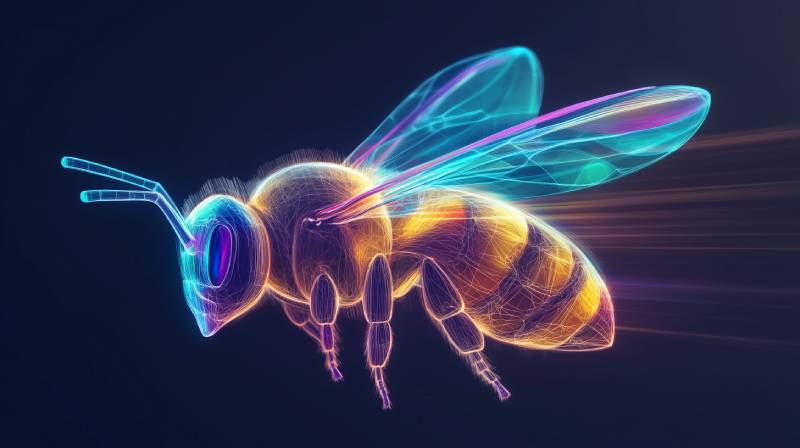
08 Oct Sweet Success: Beekeeping Practices for the Tropics
In this episode, we explore L’apiculture by Peter David Paterson, a comprehensive guide to beekeeping in tropical regions with a special focus on African practices. The book offers valuable insights into the biology of bees, hive construction, and the harvesting and processing of honey and beeswax. Blending traditional methods with modern innovations, Paterson provides practical advice for beginners and seasoned beekeepers, addressing the unique challenges faced in tropical environments. Join us as we uncover the essential techniques and knowledge that shape successful beekeeping in these regions.
0:00
/
0:00
Sweet Success: Beekeeping Practices for the Tropics

FAQs:

Glossary of Key Terms
- What is beekeeping, and why is it important?
- What are the different types of beehives used in tropical beekeeping?
- Fixed comb hives: Traditional hives where bees build combs freely (e.g., log hives, clay pot hives, woven hives).
- Movable comb hives: These hives use bars, allowing comb removal without destruction (e.g., Kenyan Top Bar Hive).
- Movable frame hives: These sophisticated hives use frames with wax foundations (e.g., Langstroth, Dadant hives).
- What are the best practices for setting up an apiary in the tropics?
- Location: Ensure good water sources, ample forage (flowering plants), and protection from strong winds and pests.
- Hive density: Optimal density is 10-20 hives per 2-3 km², depending on the availability of flowering plants.
- Hive placement: Hives can be placed on stands, suspended from trees, or sheltered based on environmental conditions and predators.
- Attracting swarms: Use bait hives with beeswax, propolis, or locally known attractant plants to lure wild swarms.
- How do I safely handle bees during hive inspections and honey harvesting?
- Protective clothing: Wear light-colored, full-body protective gear, including a veil, gloves, and boots.
- Smoker: Use a smoker to calm bees before opening the hive.
- Gentle movements: Move slowly and deliberately, avoiding sudden movements.
- Proper use of tools: Use a hive tool for prying open the hive and separating frames. A bee brush can gently remove bees from frames
- How do I harvest honey from different types of hives?
- Fixed comb hives: Harvest by crushing and straining the comb.
- Top bar hives: Cut honey-filled combs off the bars, leaving some for the bees. Crush and strain the comb.
- Movable frame hives: Remove honey-filled frames, uncap them with a heated knife or fork, and use a honey extractor to extract honey without destroying the comb.
- What are the common pests and diseases that affect bees in the tropics, and how can I control them?
- Ants: Use ant barriers like grease or oil bands around hive stands.
- Beetles (Small Hive Beetle): Keep strong colonies, practice good sanitation, and use traps.
- Wax moths: Maintain strong, clean hives. Store empty combs properly with moth repellents.
- Diseases: Regularly inspect hives for signs of disease and consult experienced beekeepers for control measures.
- What are the qualities of good honey, and how should I prepare it for the market?
- Extraction: Use hygienic methods, such as honey extractors or crush and strain.
- Filtering: Filter out impurities using fine mesh strainers.
- Settling: Allow honey to settle in a tank for a few days to remove air bubbles.
- Bottling: Bottle honey in clean, dry jars. Include labels with the weight, type of honey, and producer details.
- How can I develop a successful beekeeping business?
- Market research: Identify your target market and understand the demand for different types of honey.
- Pricing: Set competitive prices based on honey quality and market demand.
- Marketing: Explore channels such as direct sales, local markets, or partnerships with retailers.
- Quality control: Maintain consistent honey quality to build a good reputation.
- Networking: Connect with other beekeepers, organizations, and potential buyers to expand your reach and knowledge.

Glossary of Key Terms
| Term | Definition |
|---|---|
| Apiculture | The practice of keeping bees, specifically honeybees, for honey, beeswax, and other bee products. |
| Bee Space | A gap of 6-10mm that bees maintain within the hive for passage, crucial for hive design and management. |
| Brood | The collective term for the eggs, larvae, and pupae stages of honeybees developing within the hive. |
| Colony | A group of social bees living and working together as a single unit, consisting of a queen, worker bees, and drones. |
| Drone | Male honeybees whose primary function is to mate with a virgin queen. |
| Fixed-Comb Hive | A hive where bees build their combs directly attached to the hive structure, making honey harvesting destructive. |
| Frame Hive | A hive utilizing removable frames fitted with foundation sheets, allowing for non-destructive honey extraction. |
| Honeycomb | A structure of hexagonal wax cells built by honeybees to store honey, pollen, and rear brood. |
| Honeyflow | A period when nectar is abundant in the environment, leading to increased honey production. |
| Nectar | A sugary liquid produced by flowers, collected by bees, and converted into honey. |
| Pollen | A fine powder produced by flowers, collected by bees as a protein source for brood rearing. |
| Propolis | A sticky resin collected from plants by bees, used to seal cracks and gaps within the hive. |
| Queen | The only fertile female in a honeybee colony, responsible for laying eggs and regulating colony activities. |
| Swarm | A group of bees, including a queen, leaving an established colony to create a new one. |
| Top-Bar Hive | A hive with removable bars upon which bees build their combs, facilitating non-destructive honey harvesting. |
| Worker Bee | Sterile female honeybees responsible for all hive tasks except reproduction. |

